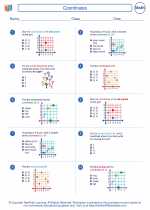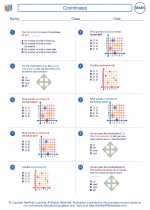Vertices
In geometry, a vertex (plural: vertices) is a point where two or more line segments, lines, or rays meet to form an angle. The word "vertex" is derived from the Latin word "vertex," which means the highest point or the topmost part of something. In the context of geometry, it refers to the point of intersection.
Types of Vertices
There are different types of vertices based on the shapes they belong to:
- Vertex of a Polygon: In a polygon, the vertices are the corner points where the sides of the polygon meet. For example, a triangle has three vertices, a square has four vertices, and so on.
- Vertex of a Polyhedron: In a polyhedron (a three-dimensional shape with flat polygonal faces), the vertices are the corner points where the edges of the polyhedron meet. For example, a cube has eight vertices, a pyramid has five vertices, and so on.
- Vertex of a Graph: In graph theory, a vertex is a fundamental unit of which graphs are formed. A vertex in a graph represents a point or an object, and the edges of the graph represent the connections or relationships between the vertices.
Study Guide
To understand vertices better, it's important to practice identifying and counting vertices in different shapes and figures. Here are some key points to keep in mind while studying vertices:
- Identify the vertices of various polygons such as triangles, quadrilaterals, pentagons, hexagons, and so on.
- Explore the vertices of different polyhedra including cubes, prisms, pyramids, and other three-dimensional shapes.
- Understand the concept of vertices in graph theory and how they are connected by edges to form a network.
- Practice drawing shapes and figures and label their vertices to reinforce the concept visually.
- Work on problems and exercises that involve counting and determining the properties of vertices in different contexts.
[Vertices] Related Worksheets and Study Guides:
.◂Math Worksheets and Study Guides Fourth Grade. Coordinates
Study Guide Coordinates
Coordinates  Worksheet/Answer key
Worksheet/Answer key Coordinates
Coordinates  Worksheet/Answer key
Worksheet/Answer key Coordinates
Coordinates  Worksheet/Answer key
Worksheet/Answer key Coordinates
Coordinates 

 Worksheet/Answer key
Worksheet/Answer key
 Worksheet/Answer key
Worksheet/Answer key
 Worksheet/Answer key
Worksheet/Answer key

The resources above cover the following skills:
Geometry (NCTM)
Specify locations and describe spatial relationships using coordinate geometry and other representational systems.
Describe location and movement using common language and geometric vocabulary.
Make and use coordinate systems to specify locations and to describe paths.